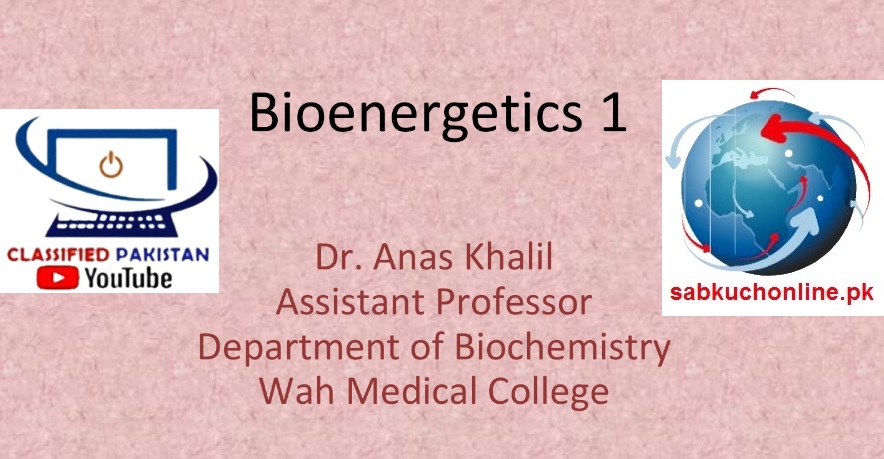Learning Outcomes
- Discuss free energy, free energy change and standard energy change
- Discuss endergonic and exergonic reactions
- Explain ATP/ADP cycle and major sources of ATP
Bioenergetics
- This field deals with how biological systems transfer and utilize energy, based on the laws of thermodynamics.
- There is need to understand the concepts of free energy, change in free energy, enthalpy and entropy.
- During a reaction, there is a change in enthalpy and entropy of the reactant and products.
Free Energy Change (ΔG)

Free Energy Change Vs Standard Free Energy Change
- Standard free energy change (ΔG ͦ) is the free energy change of a reaction under standard conditions (where the concentration of reactants and products are at 1 mol/l).
- Unlike free energy change, it cannot predict the direction of reaction under physiological conditions as it is not affected by change in substrate concentrations.
Exergonic Reaction Occurs Spontaneously Energy is released

Endergonic Reaction Does not occur spontaneously Need energy to be added



Coupling of Energy
- Biological systems store the energy liberated from spontaneously occurring exergonic reactions in the form of ATP.

- This energy is used to drive the endergonic reactions of the system.

ATP/ADP Cycle
- ATP is the energy currency of cells. It transfers energy from the breakdown of food molecules to cellular processes.
- ATP/ADP cycle is the continuously ongoing “energy recycling,” through oxidative phosphorylation of “low energy” adenosine diphosphate (ADP) molecules, to “high energy” adenosine triphosphate (ATP) molecules (binding energy), and the subsequent hydrolysis of ATP molecules back to ADP (releasing energy).
- ATP has three phosphate groups, but the bond holding the third phosphate groups is very easily broken.
- When this phosphate is removed, ATP becomes ADP—adenosine diphosphate, and energy is released.
- ADP is a lower energy molecule than ATP, but can be converted to ATP by the addition of a phosphate group.


Major Sources of ATP
- Free ATP (Exist in low levels & immediately provide energy)
- Phosphocreatinine (Stored in muscle tissue, and rapidly donate a phosphate group to ADP to form ATP, catalyzed by creatine kinase)
- Adenylate kinase reaction
ADP + ADP —> ATP + AMP
It uses the phosphate on ADP to provide energy. It occurs rarely, in extreme cases only. - Glycolysis (Both aerobic and anaerobic)
If blood glucose is used, 2 net ATPs are produced.
In case glycogen is used, 3 net ATPs are produced. - Cellular respiration (Major pathway under aerobic conditions, can use carbohydrates, lipids and proteins for generating ATP)

Click here for Download Slideshow
